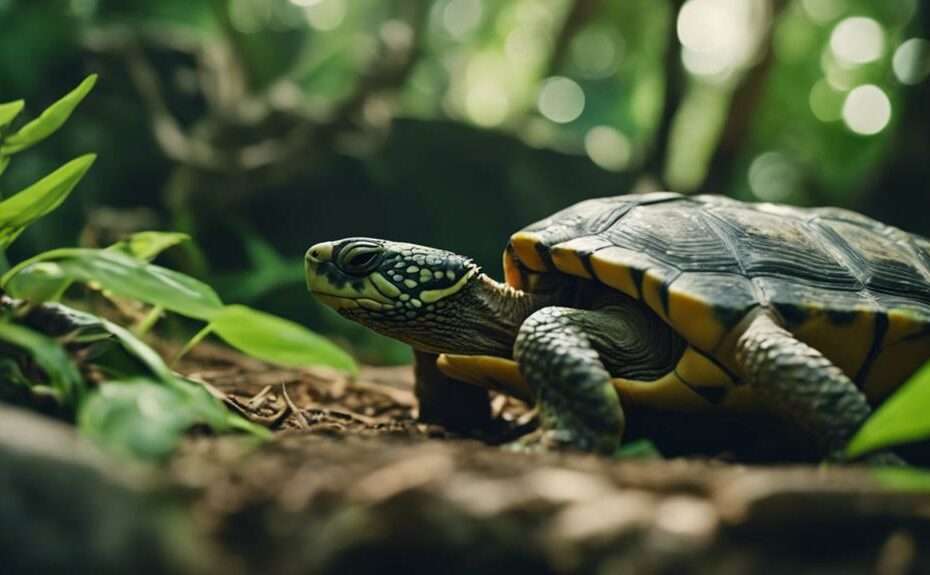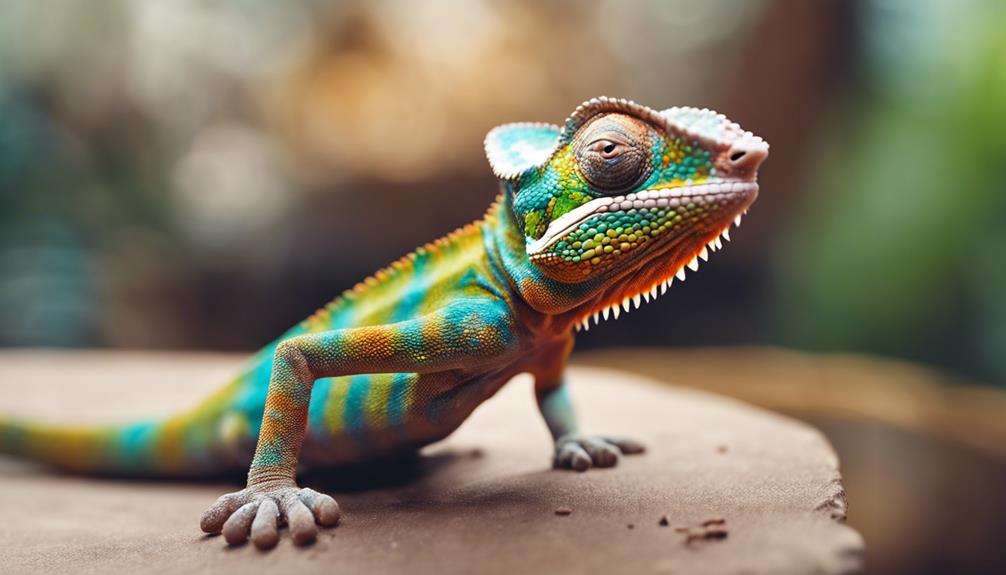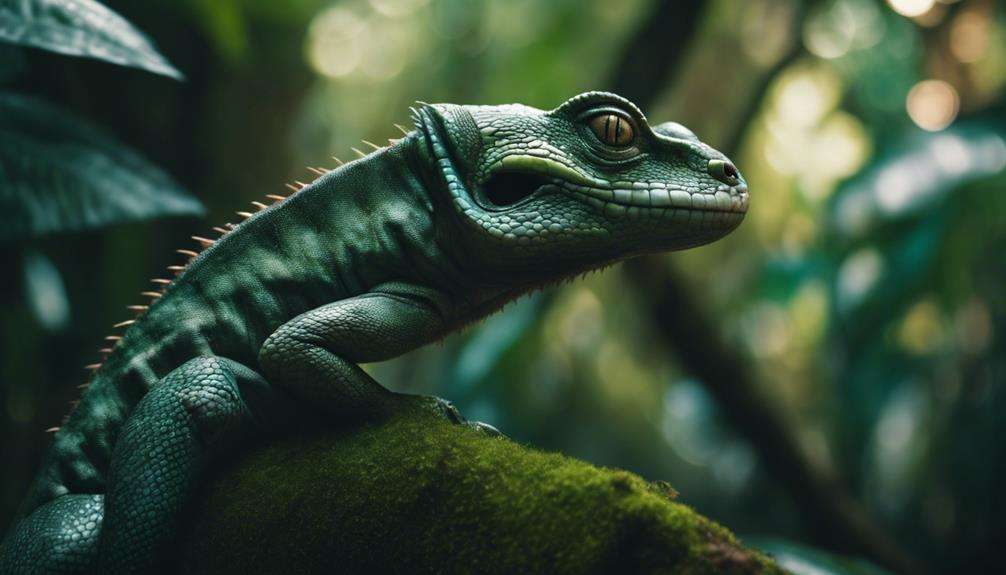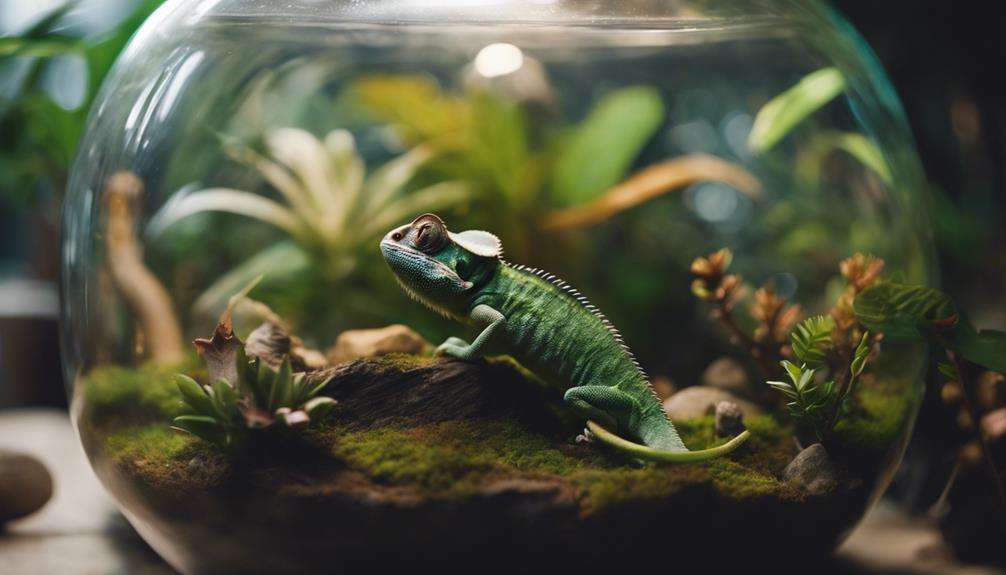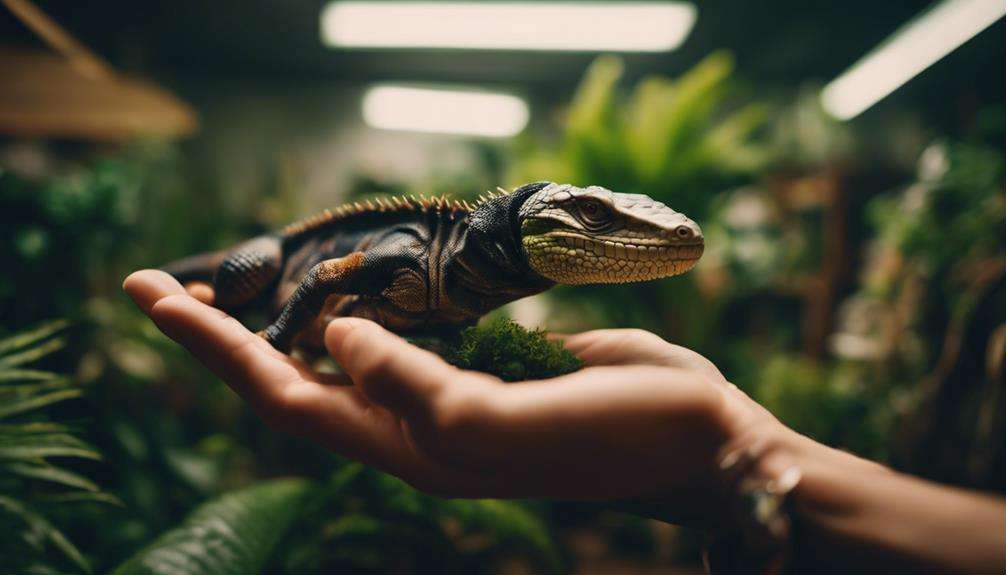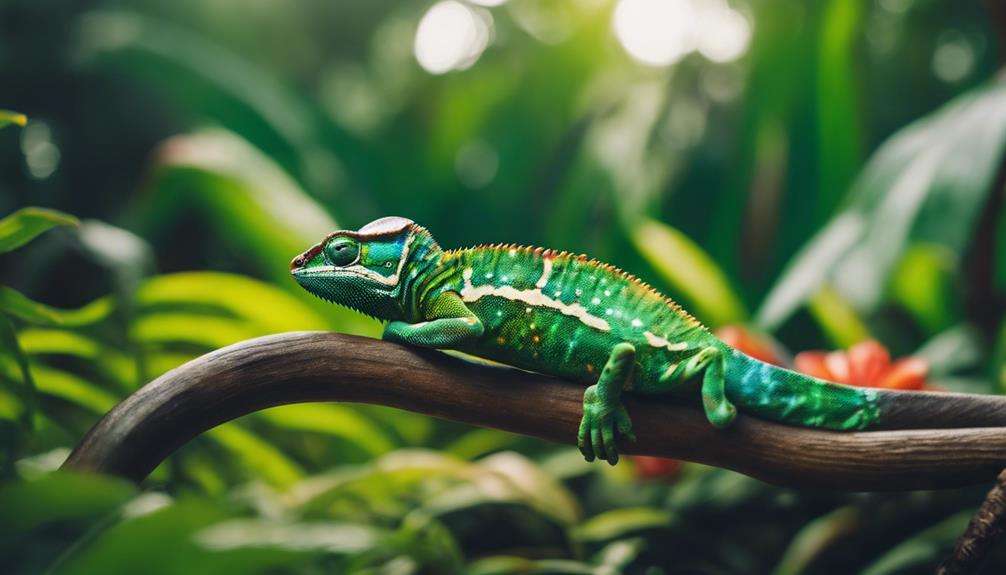In a world where the survival of endangered reptiles hangs in the balance, understanding the intricacies of conservation practices becomes paramount.
Exploring the depths of 'Protecting Endangered Reptiles: A Conservation How-To Guide,' you will uncover practical strategies to combat the looming threats faced by these vulnerable species.
From creating safe havens to fostering community involvement, each page holds a key to unlocking a future where these reptiles thrive.
Key Takeaways
- Combat illegal trade and protect critical habitats to save endangered reptiles.
- Preserve genetic diversity through breeding programs and collaboration for population resilience.
- Engage local communities in conservation efforts and prioritize habitat preservation.
- Foster global collaboration, research, and inclusive decision-making for effective endangered reptile conservation.
The Hawksbill Sea Turtle Conservation
To ensure the survival of Hawksbill sea turtles, immediate action must be taken to combat the illegal trade threatening their populations and protect their critical nesting sites. As a unique and recognizable species known for their stunning shell patterns, Hawksbill sea turtles face a serious threat from the illegal trade that targets their shells, leading to a significant decline in their global populations. Conservation efforts are crucial in protecting this endangered species, focusing on preserving their nesting sites and reducing the demand for products made from their shells.
Hawksbill sea turtles play a vital role in tropical oceans worldwide, contributing to the balance of marine ecosystems. Conservation initiatives are essential to safeguard the fragile habitats that are crucial for the survival of Hawksbill sea turtles. By addressing the illegal trade and implementing measures to protect their nesting sites, we can work towards ensuring a brighter future for this endangered species. It's imperative that we act swiftly and decisively to secure the long-term survival of Hawksbill sea turtles.
Chinese Alligator Protection Efforts
Efforts to protect the critically endangered Chinese Alligator are actively underway through intensive breeding programs and habitat restoration projects in the Yangtze River region of China.
The Chinese Alligator, facing threats like habitat loss and poaching, is on the verge of extinction. Conservationists are focusing on safeguarding the unique ecosystems that support these alligators.
Intensive breeding programs aim to boost the dwindling population, ensuring their survival in the face of adversity. Habitat restoration projects play a crucial role in providing safe havens for these alligators to thrive and reproduce.
By addressing the root causes of endangerment like habitat loss, conservation efforts strive to create a sustainable future for the Chinese Alligator. It's essential to protect these fragile habitats to secure the survival of this species.
Through dedicated conservation initiatives, the hope is to reverse the decline and ensure a stable environment where Chinese Alligators can flourish once again.
Komodo Dragon Conservation Strategies
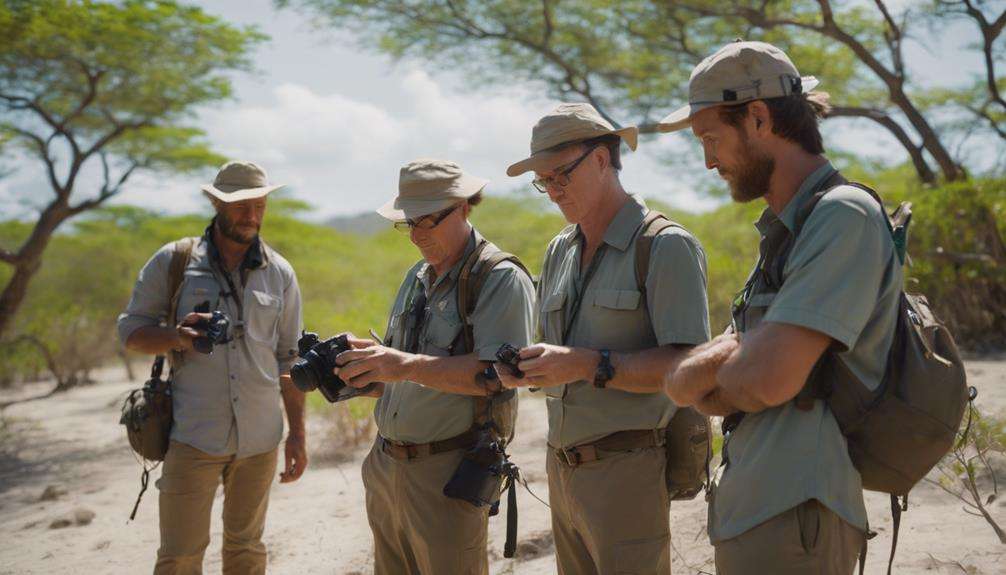
Amidst ongoing efforts to safeguard endangered reptiles, the conservation strategies for Komodo dragons are paramount in ensuring the preservation of these iconic apex predators.
To effectively protect these endangered and threatened species, conservation efforts must focus on:
- Habitat Preservation: Safeguarding the natural habitats of Komodo dragons from human encroachment and habitat destruction is crucial for their survival. Establishing protected areas like the Komodo National Park is essential in providing safe spaces for these majestic creatures to thrive.
- Anti-Poaching Measures: Implementing strict anti-poaching laws and increasing surveillance in key Komodo dragon habitats can help deter illegal hunting activities that threaten their populations. Collaborating with local communities to raise awareness about the importance of protecting Komodo dragons can also aid in reducing poaching incidents.
- Climate Change Adaptation: Developing strategies to mitigate the impacts of climate change on Komodo dragons is vital for their long-term survival. Monitoring the effects of climate change on their habitats and implementing measures to address these changes can help ensure the resilience of these magnificent reptiles in the face of environmental challenges.
Preserving Reptile Habitats
Preserving reptile habitats remains a critical priority in conservation efforts to sustain biodiversity and ecosystem equilibrium. Protecting these habitats is essential to safeguarding wildlife and ensuring the survival of endangered species.
Establishing protected areas and implementing habitat restoration projects are crucial steps in maintaining critical habitats for reptiles. However, habitat destruction, pollution, and climate change continue to pose significant threats to these environments.
To combat these challenges, it's vital to engage local communities in conservation efforts. Community participation can help raise awareness, enforce regulations, and promote sustainable practices that protect reptile habitats.
Research and monitoring play a key role in developing effective conservation strategies tailored to specific habitats and species. By actively working to safeguard reptile habitats, we can contribute to the long-term preservation of these ecosystems and the diverse wildlife they support.
Implementing Breeding Programs

When implementing breeding programs for endangered reptiles, your focus should be on carefully selecting breeding pairs to ensure genetic diversity and the health of offspring. By managing genetic diversity effectively, you can help prevent inbreeding and maintain a robust population.
Collaborating with reputable institutions and zoos is crucial for coordinating efforts and increasing the success of breeding programs.
Breeding Pairs Selection
To ensure the success of conservation breeding programs for endangered reptiles, carefully select breeding pairs based on genetic diversity and desirable traits. When choosing breeding pairs, consider factors such as age, health, and reproductive success to enhance the chances of successful reproduction and offspring viability.
Monitoring the breeding pairs closely is essential to ensure that the breeding process is going smoothly. Additionally, rotating breeding pairs periodically helps maintain genetic diversity within the population and prevents the loss of valuable traits.
Genetic Diversity Management
Ensuring the genetic diversity of endangered reptile populations is a critical aspect of implementing successful breeding programs for conservation efforts. Genetic diversity management plays a vital role in preventing inbreeding and bolstering the resilience of these populations.
Through breeding programs, the goal is to maintain genetic variability within the groups to secure their long-term survival and adaptability to changing environments. Controlled breeding practices are instrumental in producing robust offspring with varied genetic backgrounds, ultimately lowering the incidence of genetic abnormalities.
Genetic management within breeding programs involves meticulous tracking of pedigrees, conducting thorough genetic analyses, and making well-informed decisions regarding breeding pairs. Effective genetic diversity management is paramount for the sustainability and triumph of captive breeding and reintroduction initiatives aimed at safeguarding endangered reptile species.
Engaging Local Communities
Engage local communities to enhance endangered reptile conservation efforts. By involving those who live near critical habitats, you can significantly boost conservation outcomes.
Here's how you can effectively engage local communities:
- Community Outreach Programs: Implement educational initiatives that raise awareness about endangered reptiles and the importance of conservation efforts. This can be achieved through workshops, presentations, and interactive activities.
- Collaborative Conservation Projects: Work together with local residents on habitat restoration projects to create healthier environments for endangered reptiles. By involving communities in hands-on conservation work, you can foster a sense of ownership and stewardship.
- Inclusive Decision-Making: Invite community members to participate in planning and decision-making processes regarding conservation strategies. By incorporating their perspectives and insights, you can develop more holistic and effective approaches to protecting endangered reptiles.
Monitoring Research Initiatives
Implementing cutting-edge monitoring techniques is crucial for effectively tracking endangered reptiles in their natural habitats. Camera traps play a vital role in capturing images of elusive reptiles, providing valuable insights into their behavior and distribution patterns.
Acoustic surveys offer another avenue for researchers to monitor endangered reptiles by recording their vocalizations, aiding in species identification and population monitoring. Additionally, visual encounter surveys involve systematically scouring designated areas to monitor population trends and habitat usage.
Pitfall traps are instrumental in capturing small reptiles and invertebrates for further research and monitoring purposes, giving researchers a closer look at the ecosystem dynamics. Furthermore, mark-recapture studies are essential for estimating population sizes of endangered reptiles. This method involves capturing, marking, and releasing individuals to track their movements, providing crucial data for conservation efforts.
Global Collaboration for Conservation
Collaborating globally is imperative for the successful conservation of endangered reptiles. International partnerships play a crucial role in addressing threats to rare and endangered reptiles that transcend national boundaries. By working together across borders, countries can combine their efforts to better protect the habitats of these vulnerable species.
Here are three key ways in which global collaboration enhances conservation outcomes:
- Knowledge Sharing: International partnerships facilitate the exchange of information and research findings, allowing conservationists to learn from each other's experiences and best practices in protecting endangered reptiles.
- Resource Pooling: Collaborating on a global scale enables countries to pool together resources such as funding, technology, and expertise, maximizing the impact of conservation efforts for rare and endangered reptiles.
- Policy Alignment: By forming international alliances, countries can align their conservation policies and regulations to create a unified front against threats to endangered reptiles, ensuring more effective protection measures are implemented worldwide.
Through these collaborative efforts, the global community can work towards a more sustainable future for endangered reptiles.
Combating Poaching and Illegal Trade
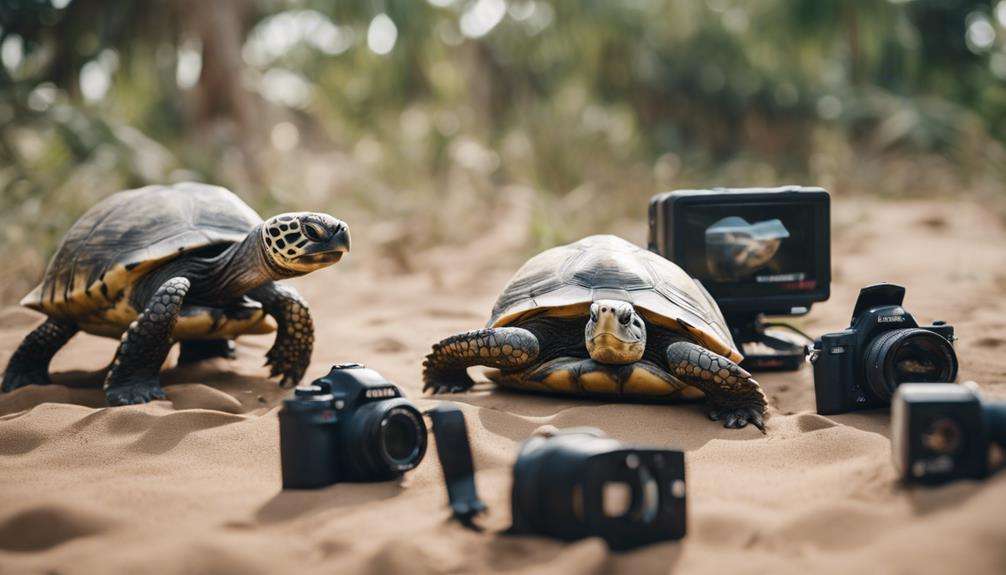
Efforts to combat poaching and illegal trade targeting endangered reptiles demand stringent enforcement of laws, heightened monitoring, and widespread public awareness campaigns. Poaching and illegal trade pose significant threats to endangered reptiles globally. The illegal trade of reptiles, driven by the demand for skins, shells, and body parts, contributes significantly to the decline of these species. Poachers specifically target reptiles such as turtles, snakes, and lizards to supply the exotic pet trade and traditional medicine industries. Illegal trade networks operate on a global scale, perpetuating the demand for rare reptile species and further endangering their populations.
To address this critical issue, strict enforcement of existing laws is essential to deter poachers and illegal traders. Increased monitoring of high-risk areas and transportation routes can help intercept illegal activities. Public awareness campaigns play a vital role in educating communities about the importance of protecting endangered reptiles and reporting any suspicious activities. By actively combating poaching and illegal trade through these measures, we can work towards safeguarding endangered reptile populations for future generations.
Frequently Asked Questions
How Can We Save Endangered Reptiles?
To save endangered reptiles, get involved in your community and restore habitats. Your actions matter in protecting these species. By working together, we can make a difference and ensure a future for these vulnerable reptiles.
What Can You Do to Help Protect Endangered Species?
To help protect endangered species, you can raise awareness through community involvement. Support conservation efforts, advocate for critical habitats, and educate others on the importance of preserving ecosystems. Volunteer at wildlife refuges to make a direct impact.
How Are Conservationists Trying to Save Endangered Species?
Conservationists are reviving endangered reptiles through reintroduction programs. Habitat restoration efforts are critical in safeguarding their survival. By engaging communities, monitoring, and international cooperation, these strategies aim to ensure long-term protection for these vulnerable species.
What Steps Should Be Taken to Ensure the Species Is Conserved?
To ensure species conservation, prioritize habitat restoration for endangered reptiles. Engage in poaching prevention efforts and community involvement. Support breeding programs and international cooperation. Research, monitor, and implement strategies for long-term success in protecting these vulnerable species.
Conclusion
Now that you've learned the essential steps to protect endangered reptiles, it's time to take action.
By implementing conservation practices, supporting breeding programs, and engaging with local communities, you can make a real difference in safeguarding these vital species.
Remember, every small effort counts towards the greater goal of preserving biodiversity and ensuring the survival of these magnificent creatures for future generations.
Together, we can make a positive impact on our planet's ecosystems.
